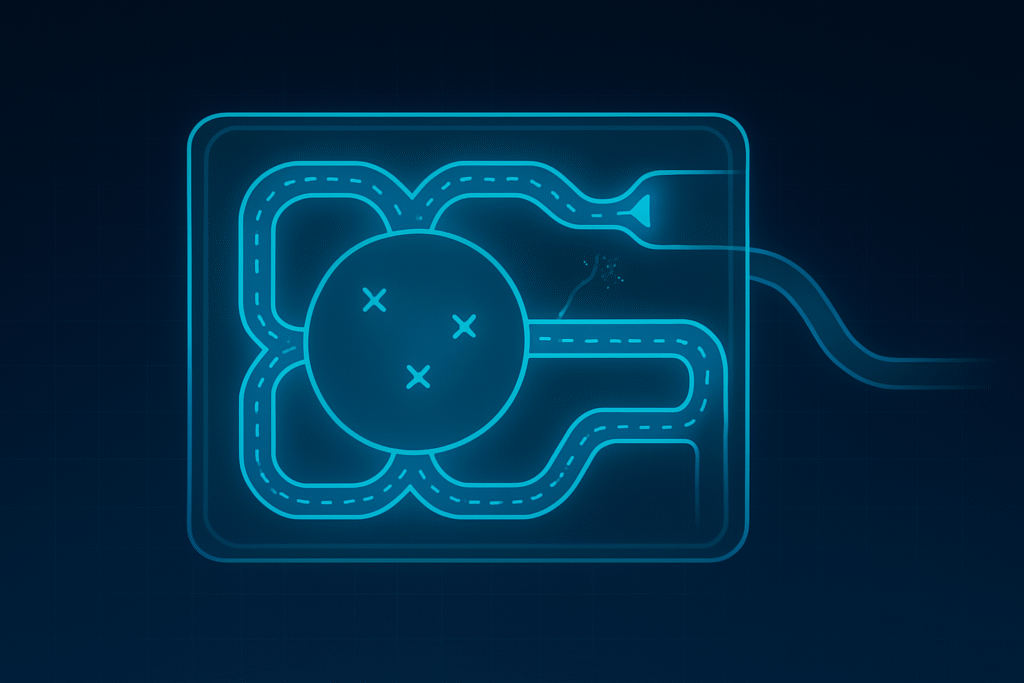Scientists at the Terasaki Institute in Los Angeles have created a vascularized liver cancer-on-a-chip model that allows researchers to test embolic therapies with unprecedented accuracy. This microfluidic platform mimics the structure and blood flow of human liver tumors, offering a powerful alternative to animal testing and traditional cell cultures.
Embolization is a minimally invasive treatment for liver cancer that involves injecting agents into the hepatic artery to block blood supply to the tumor. These agents can be combined with chemotherapy or radioactive beads to enhance their effect. However, most embolic agents are developed using animal models, which differ significantly from human biology and often fail to predict clinical outcomes.
To address this, Dr. Vadim Jucaud’s lab designed a chip-based system that includes tumor spheroids surrounded by perfusable capillary-like vessels. These vessels can be occluded with embolic agents delivered through a catheter, closely replicating the clinical procedure. Researchers can then measure tumor cell death, vessel regression, cytokine release, and changes in cell markers to evaluate treatment efficacy.
The model reflects the dynamic vascular environment of hepatocellular carcinoma, allowing scientists to study how embolization affects tumor hypoxia, immune cell infiltration, and angiogenic signaling. These insights are critical for developing more precise and effective therapies.
Dr. Huu Tuan Nguyen, first author of the study, emphasized that the platform enables direct delivery of embolic agents into engineered tumor vessels, providing a realistic view of how tumors respond at both the cellular and tissue levels. This approach also supports the National Institutes of Health’s push to reduce reliance on animal testing by promoting human-relevant alternatives.
Article from the Terasaki Institute: A Novel Embolization-on-a-chip Model Allows Testing Various Embolic Agent Classes to Treat Liver Cancer
Abstract in Biofabrication: Embolization-on-a-chip: Novel Vascularized Liver Tumor Model for Evaluation of Cellular and Cytokine Response to Embolic Agents

